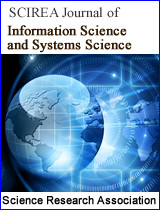The Deductibility of the Generalized Syllogism AAM-1
DOI: 10.54647/isss120362 28 Downloads 11613 Views
Author(s)
Abstract
Firstly, according to set theory, the validity of the generalized syllogism AAM-1 is proved in accordance with the truth-value definitions of quantified statements. Then, on the basis of generalized quantifier theory, this paper derives the other 14 valid generalized syllogisms from the validity of generalized syllogism AAM-1 by taking full advantage of the inner and outer negation of a generalized quantifier, the symmetry of the two Aristotelian quantifiers ‘some’ and ‘no’, the subsequent weakening rule, the anti-syllogism inference rules, and other reduction operations. This research method conforms to the demand of formal transformation for natural language information in the era of mega data.
Keywords
generalized syllogism; deductibility; truth-value definition; quantifier
Cite this paper
Jingyi Zhang, Long Wei,
The Deductibility of the Generalized Syllogism AAM-1
, SCIREA Journal of Information Science and Systems Science.
Volume 8, Issue 5, October 2024 | PP. 186-193.
10.54647/isss120362
References
| [ 1 ] | Barwise, J., & Cooper, R. (1981). Generalized quantifiers and natural language. Linguistics and Philosophy, 4(2), 159-219. |
| [ 2 ] | Cheng, Z. (2023). Formal Research on Aristotelian Modal Syllogism from the Perspective of Mathematical Structuralism, Doctoral Dissertation, Anhui University. (in Chinese) |
| [ 3 ] | Cheng, Z. (2023). How to Deduce the Other 91 Valid Aristotelian Modal Syllogisms from the Syllogism 口I口A口I-3, Applied Science and Innovative Research, 7(1), 46-57. |
| [ 4 ] | Endrullis, J., & Moss, L. S. (2015). Syllogistic logic with ‘most’. In V. de Paiva et al. (eds. ), Logic, Language, Information, and Computation, 124-139. |
| [ 5 ] | Feifei, Y., & Xiaojun, Z. (2024). Knowledge Representation and Knowledge Reasoning in Square{most} and Square{all}. Annals of Social Sciences & Management Studies, 10(4), 555793. |
| [ 6 ] | Hamilton, A. G. (1978). Logic for Mathematicians. Cambridge: Cambridge University Press. |
| [ 7 ] | Halmos P. R. (1974). Naive Set Theory. New York: Springer-Verlag. |
| [ 8 ] | Jin, X., & Xiaojun, Z. (2023). The Reducibility of Generalized Modal Syllogisms Based on ☐AM◇I-1. SCIREA Journal of Philosophy, 3(1), 1-11. |
| [ 9 ] | Johnson, F. (2004). Aristotle’s modal syllogisms, Handbook of the History of Logic, I, 247-338. |
| [ 10 ] | Long, W. (2023). Formal System of Categorical Syllogistic Logic Based on the Syllogism AEE-4. Open Journal of Philosophy, 13(1), 97-103. |
| [ 11 ] | Łukasiewicz, J. (1957). Aristotle’s Syllogistic: From the Standpoint of Modern Formal Logic. second edition, Oxford: Clerndon Press. |
| [ 12 ] | Malink, M. (2013). Aristotle’s Modal Syllogistic, Cambridge, MA: Harvard University Press. |
| [ 13 ] | Moss, L. S. (2008). Completeness theorems for syllogistic fragments. In F. Hamm and S. Kepser (Eds.), Logics for Linguistic Structures, Berlin: Mouton de Gruyter, 143-173. |
| [ 14 ] | Peters, S., & Westerståhl, D. (2006). Quantifiers in Language and Logic, Claredon Press, Oxford. |
| [ 15 ] | Thomason, S. K. (1997). Relational modal for the modal syllogistic. Journal of Philosophical Logic, 26, 129-141. |
| [ 16 ] | Xiaojun, Z. (2018). Axiomatization of Aristotelian Syllogistic Logic Based on Generalized Quantifier Theory. Applied and Computational Mathematics, 7(3), 167-172. |
| [ 17 ] | Xiaojun, Z. (2020). Screening out All Valid Aristotelian Modal Syllogisms. Applied and Computational Mathematics, 8(6), 95-104. |
| [ 18 ] | Xiaojun, Z., & Baoxiang, Wu. (2021). Study on Chinese Discourse Inference. Beijing: People’s Publishing House. (in Chinese) |

